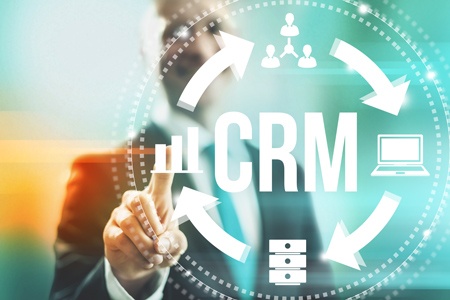What is a CRM?

Improving on communication
One of the central features of CRM is using the very experience of consumer engagement as a means of improving on current and imminent communications with accumulating data and, ultimately, encouraging sales growth. There are a number of ways a business may implement the principles, both organizational and technological, in the interest of wielding information in the most constructive way available.
Using different channels
Using different channels is the most effective means of ensuring a wide reach and, inversely, amassing even more intelligence. Among a variety of avenues are a proprietary website, email, social media, live chat, delivery mail, other marketing materials, and calling on an actual phone: almost any point of contact among customers and companies is a viable resource of a CRM system.
CRM software
Inasmuch as Customer Relationship Management refers to principles and practices, a Customer Relationship Management system is one actually doing the work of amassing and compiling information on each phase of consumer interaction in order for further optimization of the process. Inevitably, any CRM will involve making a customer a nucleus in the heart of anything else a company ever conceives of.
Hub/Dashboard
The main initiative of any CRM software is to integrate and streamline frequently independent lifecycle stages, including sales, marketing, and customer support. Therefore, the software usually offers a hub in which all of these are interconnected. You’ll be able to view any relevant information on a single customer on each of the three automated intervals: sales force automation, marketing automation, and service automation.
Automation of consumer lifecycle
Using the aforementioned CRM, which is known as a Strategic CRM, you’ll use various forms of automation to ensure you’re on top of a customer’s journey, whichever section of the lifecyle they’re in. For sales force automation, this will mean awareness of a client’s purchase record concerning repeat buying and the facilitation of any further engagement in the interest of even larger repetition. This automation will also account for any communication in between.
Marketing/Service automation
Marketing automation is used for ongoing repeatable endeavors, like situational emails or social media dissemination. The CRM is also able to keep up on the engagement with your social media activity. Marketing, of course, is most interested in the process of evolving a lead into a customer. Service automation is used for interaction with a customer with respect to any area of communicating, from a contact center with pre-recorded advice to a processing of a request.
Analytical CRM
The other major form of CRM is an Analytical CRM, which is predominantly used on the other side of all the activity we’ve covered. Anything you’re doing, automated or no, is fair game for analysis in a myriad of sophisticated granularities. Among the more advanced analyses are using data mining, identifying correlation, and the application of pattern recognition in the interest of giving you useful lines of inquiry and improvement.
Your Articles Need SkimCatchables
Skim-Catchables are bloggers' - now- not-so- secret weapon to make readers' jobs easier because they can easily skim down a page and find the answer to what they are looking for. Engaging titles and subtitles, gorgeous infographics, and functions like TL; DR (Too long; didn’t’ read) not only help readers, but should be part of any writer's tool kit!
Topic #customer relationshipJustin is a writing intern for AbilitySEO with a passion for words and a love of both consuming and creating content. He studied philosophy and, outside of marketing, enjoys volunteering and pop culture. Contact him at jbw348@gmail.com


Leave us
a Comment!